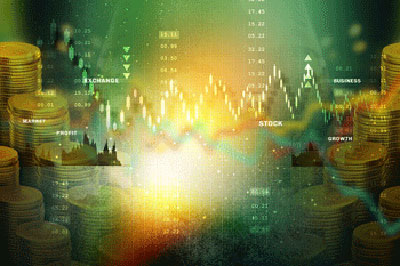Commerzbank Sees $1,400 Gold, $16.50 Silver By Year-End
Allen Sykora
 Commerzbank looks for gold to climb as high as $1,400 an ounce and silver to $16.50 before the end of 2019. Commerzbank looks for gold to climb as high as $1,400 an ounce and silver to $16.50 before the end of 2019.
Gold started the year strongly, nearly reaching $1,350 an ounce last month, helped by a U.S. Federal Reserve that made a dovish U-turn and now appears cautious about hiking interest rates again. However, the metal subsequently gave up much of its gains and was trading at $1,303.60 as of 8:20 a.m. EDT. Silver, which has followed gold up and back down, was at $15.35.
Analysts pointed out that gold hit its yearly highs in 2014, 2015 and 2018 during the first three months of the year. However, they say they do not think the metal has peaked in 2019, calling the recent pullback a “pronounced correction,” with more upside to come.
“We are still convinced that gold will climb noticeably during the course of the year,” Commerzbank said. “This is supported by the premature end to the Fed’s rate-hike cycle, the continued ultra-expansionary monetary policy of the ECB [European Central Bank], possibly stronger demand in China and India again and a possible revival of investment demand in the West.
“What is more, central banks remain important buyers. Gold is likely to rise to $1,400 per troy ounce by year’s end.”
Analysts noted this is an upward revision of $50 from their previous forecast.
“The silver price is likely to climb in 2019, but only because we envisage a rising gold price,” Commerzbank said. “We do not believe that silver is capable of achieving any noticeable additional gains of its own accord.
“We expect a silver price of $16.50 per troy ounce at year’s end. This would mean a gold/silver ratio of 85.”
The gold/silver ratio measures how many ounces of silver it takes to buy an ounce of gold, with a higher number meaning underperformance by silver, and vice-versa. The ratio is currently at a historically high level of 84.9.
While the potential for more Fed rate hikes has diminished and taken away a possible headwind for gold, the ECB has announced new longer-term refinancing operations, Commerzbank pointed out.
“Admittedly, these measures will prevent the U.S. dollar from depreciating more sharply against the euro,” said Commerzbank, referring to a factor that normally might help gold. “However, maintaining the ultra-expansionary ECB monetary policy for a longer period – we do not envisage any rate hike in 2020, either – should likewise benefit gold.”
Meanwhile, there are signs of a possible U.S.-China trade deal, Commerzbank pointed out. If so, that would remove yet another headwind – the negative correlation between the gold price and the exchange rate between the U.S. and Chinese currencies, analysts continued.
“Gold demand in China would profit from such a trade deal because this would likely contain a clause to rule out any competitive depreciation of the renminbi,” Commerzbank said.” The depreciation of the renminbi resulted in local gold prices remaining at a high level despite falling prices on the world market. Furthermore, the trade conflict has generated uncertainty and buying reticence among Chinese consumers.”
China, along with India, is one of the two largest gold-consuming nations in the world. Analysts also look for demand to pick up in India, particularly if the rupee stabilizes now that Fed rate hikes appear to have come to an end.
Meanwhile, central banks collectively bought 651.5 metric tonnes of gold last year, the most in more than half a century, according to World Gold Council data. This included a number of new official-sector buyers.
“Given that gold still accounts for only a small proportion of the currency reserves of many central banks, the buying interest in the official sector should remain high,” Commerzbank said. “Added to this is the fact that some central banks (especially those in China and Russia) are likely to attempt to reduce their USD [U.S. dollar] exposure in response to the U.S. sanctions policy.
“It will probably be difficult for central bank purchases in 2019 to reach last year’s extremely high level again. All the same, they should be considerably higher than in 2016 or 2017 (which each saw figures of below 400 tonnes).”

Allen Sykora reports on precious metals and the mining industry for Kitco News. He has covered foreign-exchange and commodity markets for Futures World News, Dow Jones Newswires and Kitco for 25 years. He holds a mass communications degree from Mankato State University in Minnesota and worked as a reporter and editor at newspapers in Minnesota, Iowa and Alaska before becoming a financial journalist.
www.kitco.com
| 



